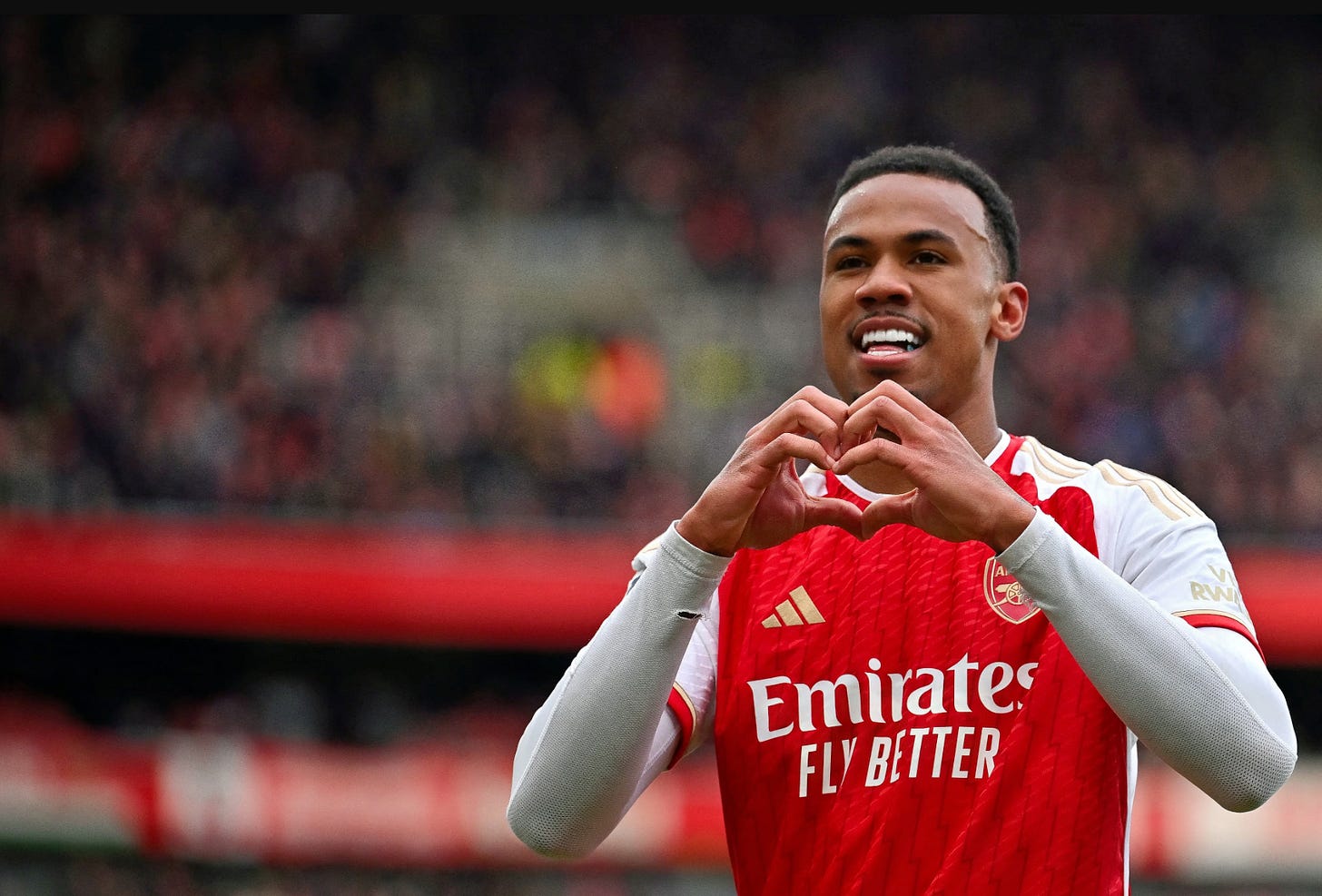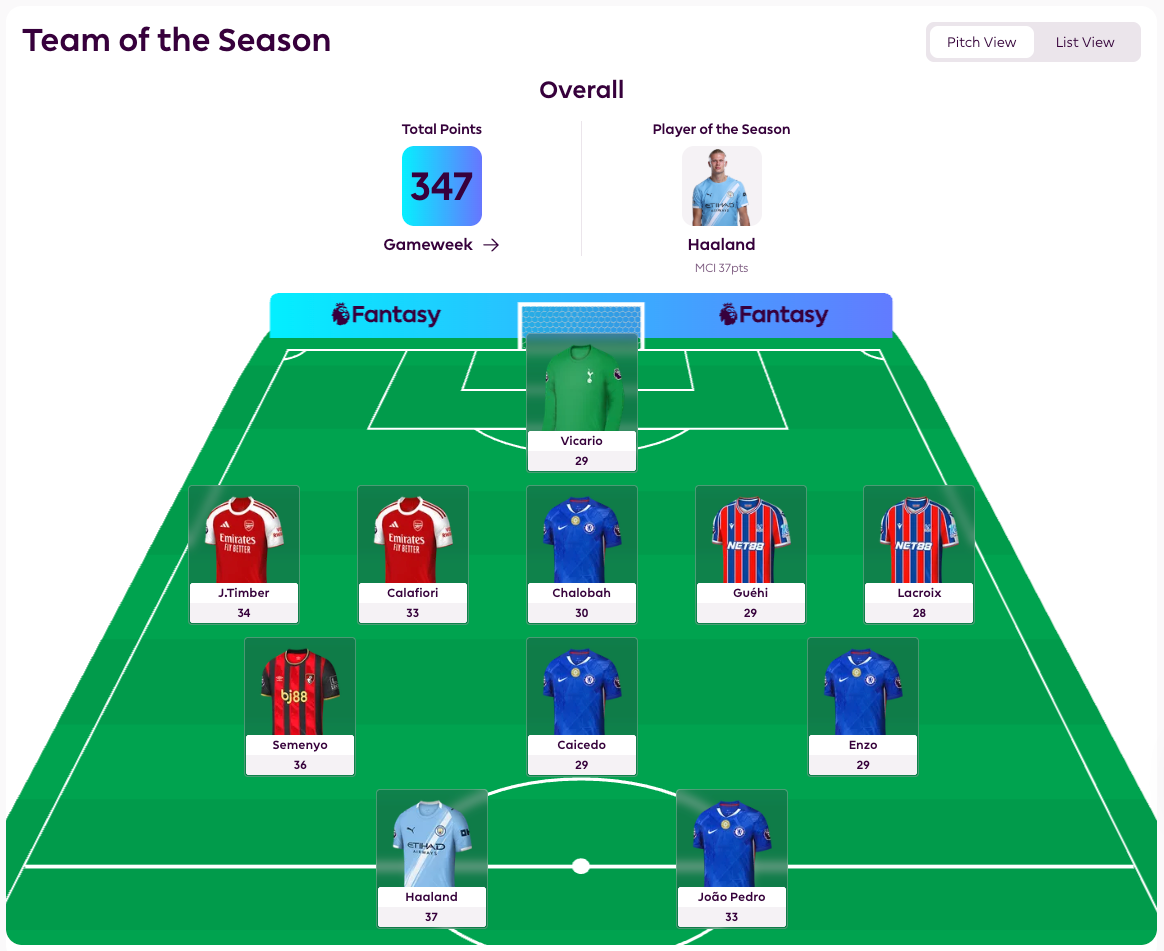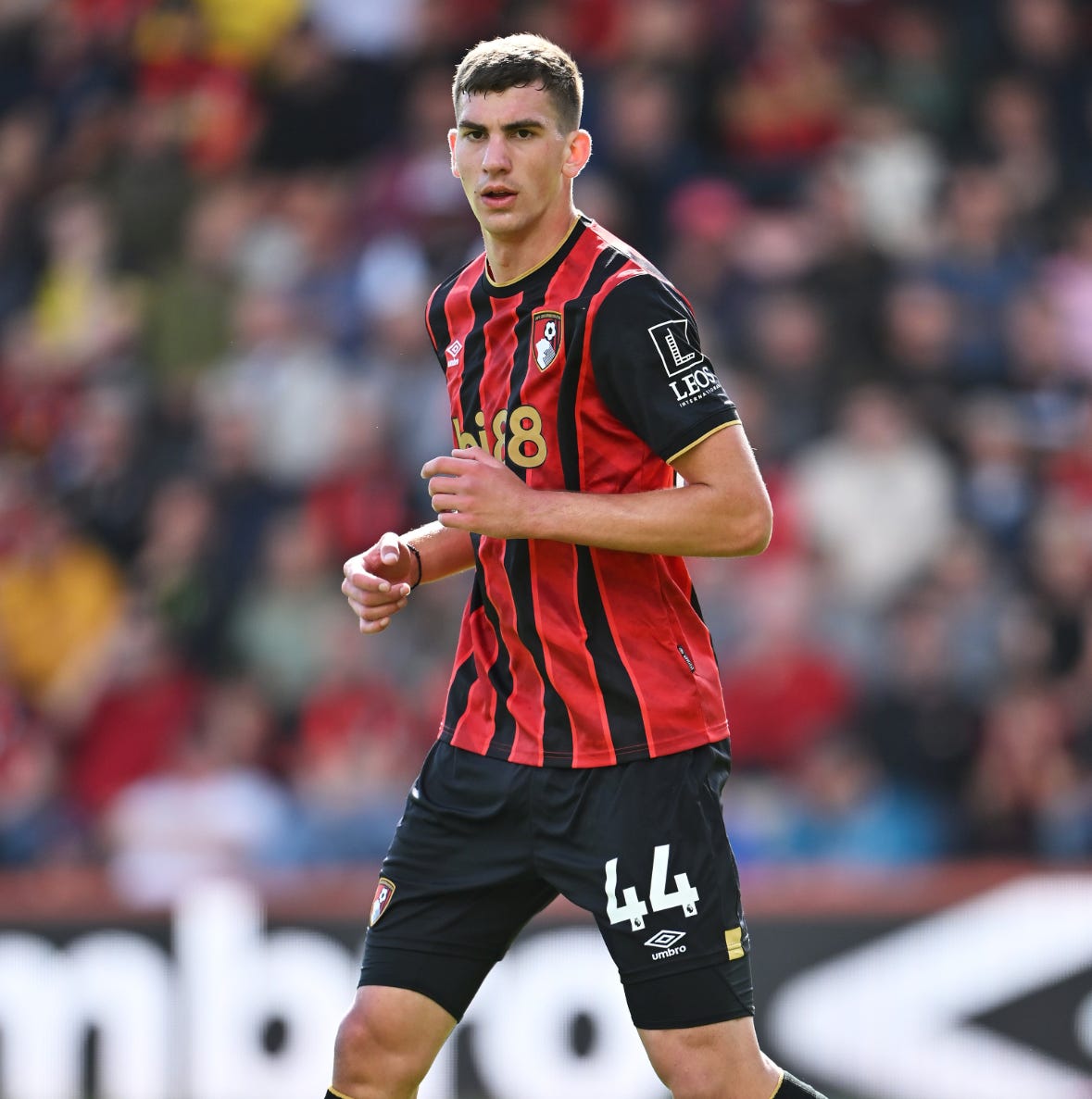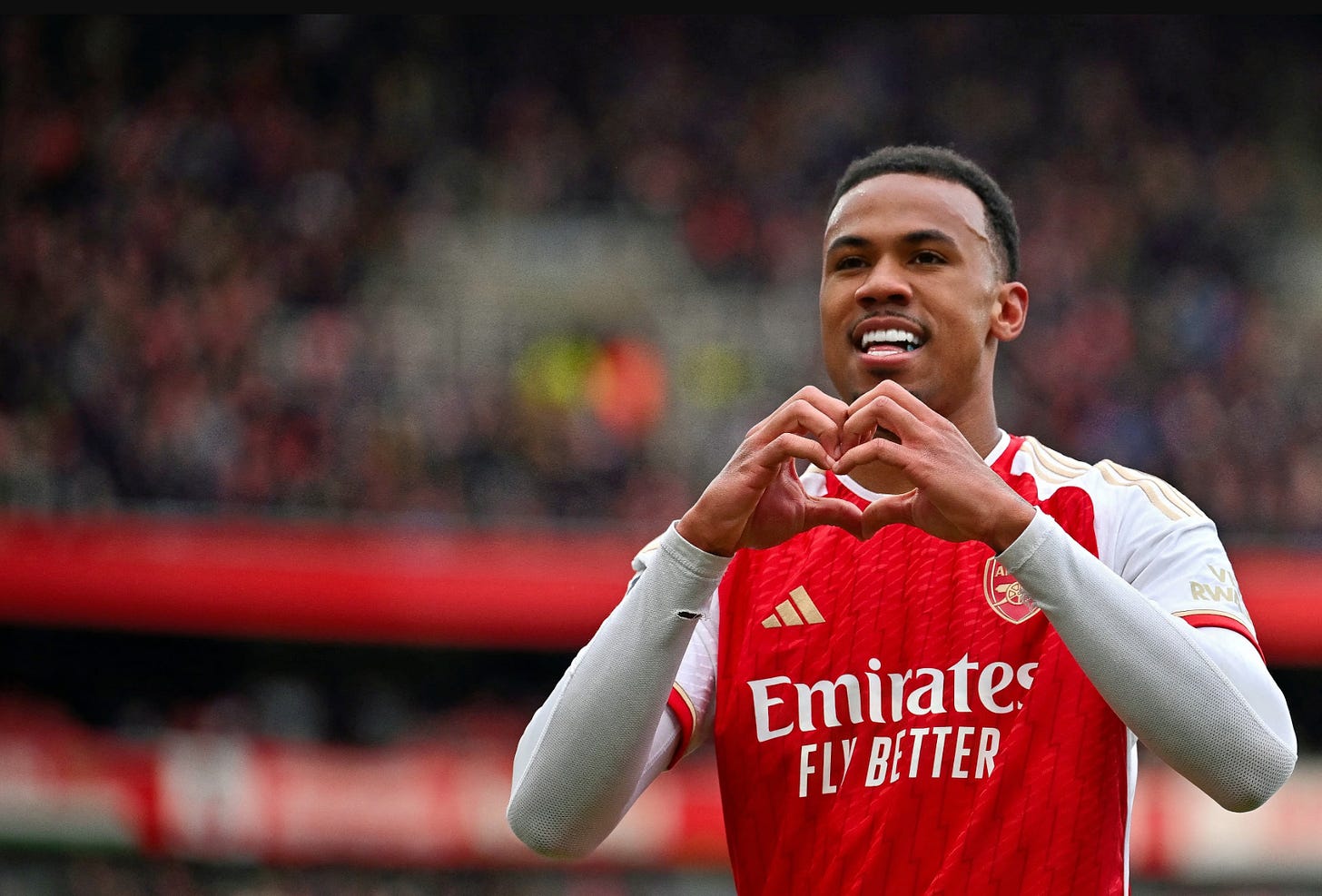Five at the back? Leeds and Sunderland's strong defences? What the numbers really tell us
What's going on in Premier League defensively?
Note: This newsletter is truncated in an email. You can click on "View entire message" to see the full post in your email app.
Let’s be honest — a lot of what’s happening this season is just noise.
You can’t draw strong conclusions from just four gameweeks of data. When we reach GW8, we'll have... well, double the information we currently possess. It’s only by around GW12 that we’ll begin to see clear trends.
As the season progresses, we will even discard the noisy earlier sample size to eliminate the “prolonged pre-season” phase and focus on a more current, yet still robust, sample of data. But we are not there yet.
Despite that, we can assess what we currently see.
This will be a true, old-school Data Dribble.
Brace for a lot of defensive data.
Team of the season and 5-at-the-back
Alright:
Looking at the team of the season here, it’s suddenly clear where these discussions about going five at the back on wildcard originate from. To draw this conclusion after GW4 is, quite frankly, absurd at this stage*.
There were some hauls driven by attacking returns, which you can’t expect as a regular occurrence.
There are 32 clean sheets so far this season after Gameweek 4, compared to 18 and 14 in the same period in the last two seasons. While it’s not a coincidence and a visible decrease in expected goals (xG) drives those figures — it’s 94 this season compared to the average of 116 over the last two seasons — you can’t confidently assume this will be a long-term trend.
Over the long term, the figures tend to regress towards the mean. The number of clean sheets could well be higher after GW38, but it won’t suddenly increase by 50%. That’s impossible.
*I’m not suggesting that picking five defenders who will provide you with proper depth is a bad idea, but you realistically won’t play 4 or 5 at the back every week.
The main reason for that huge spike is probably that “good” teams faced a tough run of fixtures initially. And their fixtures will improve over time.
With the introduction of DEFCONs, some defenders certainly have more value. However, if you examine the team above, it is actually driven not by defensive contributions, but mostly by clean sheets and attacking returns.
As I discussed during the pre-season, combine clean sheet potential with attacking threat, and sprinkle in CBIT potential (apart from the monsters like Tarkowski—you can take fewer clean sheets with them)
That said, we can still look at individual teams to identify signals, which might help us with our FPL decisions.
🍒 Bournemouth: Things are shaping up well so far
Last week, I hinted that we need to monitor closely how Bournemouth’s defence will perform against Brighton, because the signs so far are positive. And they delivered again:
Wolves, 0.46 expected goals conceded
Spurs, 0.19 xGC
Brighton, 0.62 xGC
During that period, they allowed just 10 shots from inside the penalty area, with only one exceeding 0.20 xG — Kaoru Mitoma’s 0.37 xG goal from the six-yard box.
Note that they delivered another excellent defensive display despite Bafodé Diakité not being fully match fit and having to play Veljko Milosavljevic in his position. The Serbian centre-back is only 18 years old and arrived a few weeks ago, with just 1,131 top-flight minutes for Crvena Zvezda.
Fascinating stuff.
Let’s hope that when Diakité returns, this doesn’t turn into an early, heated three-way battle for a centre-back partnership, as Marcos Senesi’s value is currently extremely high, with him accumulating all the DEFCONs out there. There’s probably nothing to worry about yet, since Milosavljevic has only trained three times so far, and Iraola will gladly give him enough time to settle in.
However, it’s not just about them. Adrien Truffert seems to have solid final pass potential, averaging 0.11 xA per game. Furthermore, Iraola was reportedly pleased with Alex Jimenez’s debut, implying he might soon be in contention.
Next up are Newcastle, who are dealing with some injuries and suspensions, along with Leeds and Fulham, which aren’t exactly teams that produce a high volume of good chances.
🔴⚪ Arsenal: The same old story
With GW7 quickly approaching, you may want to hear some reassurance that picking Arsenal’s defence for their fixture swing is a wise idea. So, there it is:
I wouldn’t worry in the slightest.
Already facing Manchester United, Leeds, Liverpool, and Nottingham Forest, they conceded just 2.42 expected goals.
That’s the second best after Newcastle, who conceded 2.1 xGC, but had very favourable fixtures.
Furthermore, Arsenal average just 0.062 xG per shot conceded, which is:
1️⃣ extremely low number 🤝 great result
2️⃣ a very important factor for their chances of keeping a clean sheet
Why is the xG per shot metric that important?
The quality of shots matters. Conceding a single 0.80 xG chance is not the same as conceding 4 x 0.20 xG chances.
In this example, one big chance has an 80% chance of being scored, while four smaller chances only total around 59%. In other words, it’s not just about how dangerous chances a team gives up — how that xG is distributed across shots also matters.
For FPL, the best defence is one that concedes few xG and low-xG shots.
Although William Saliba will miss some gameweeks, there is so much depth and quality in the team (both in terms of personnel and coaching) that it shouldn’t significantly affect defensive performances to the point that they wouldn’t remain a good choice.
Oh, when we discuss distribution…
Arsenal generated 6.51 xG, which is currently the 5th highest.
Their totals include some open play xG, some counter-attacking xG, some re-pressing one, but also... 3.16 xG from set pieces, and 5 actual goals scored from these chances.
Note that when you hear a data analyst talk about xG from set pieces, it includes not only shots directly from corners or free kicks but also situations where the defence clears the ball, the team wins the second ball, and then shoots.
These models often use time-based definitions, like “a shot within 20 seconds after the set piece is taken”.
It varies by data company, but you’ll get the idea.Distribution of shots is as follows:
19 shots
15 inside the box
7 inside the 6-yard box
7 headers
As for the players (only notable ones):
Jurriën Timber: 4 shots
Ricardo Calafiori: 2
Gabriel: 2
Rice: 2 (free kicks)
Zubimendi: 2 (see GW4 highlights)
Madueke: 2
It’s still heavily influenced by that Leeds game, but the positive is that Gabriel still gets his shots. He’s the safest option at the moment, although Timber and Calafiori are definitely turning heads.
For those of you preferring a more conservative approach, I don’t mind David Raya—generally, I’m not a fan of £5.5m goalkeepers, but considering the security and the fact we have £4m Dúbravka, I’m comfortable spending £9.5m on that position to secure a double up.
I think it’s safe to say Arsenal are going to have a good season defensively.
In the following part of the article, I’ll discuss:
What do Everton and Chelsea have in common?
Is there a reason to be optimistic about the Spurs?
Leeds and Sunderland: Good defences or random events?
Teams we can definitely target for now
Manchester City: What's really happening?
Why are players getting their DEFCONs?
And more…








